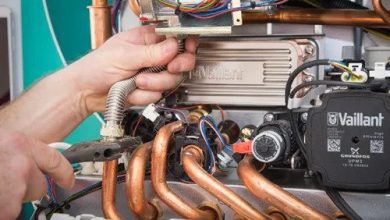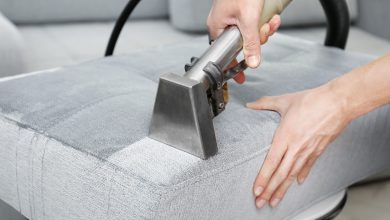How to Maintain and Clean Your Kitchen Exhaust System?

The kitchen exhaust is an indispensable element of the kitchen. It creates comfortable conditions for cooking and avoids unpleasant odours in the apartment and on clothes. As with any similar mechanism, this kitchen assistant needs proper care. Otherwise, the effectiveness of removing unpleasant odours is lost.
Sometimes, it’s enough to just look at it to determine if the hood needs cleaning. A sticky coating of fat, adhering dust, increased noise when turning on are the first signals about the need to clean the hood in the kitchen from fat. It sucks up vapours of oil, fat, and other things. The dirt and plaque won’t only be on its surface but also on all the insides, fan, casing, etc.
A logical question arises: if it’s extremely difficult to wipe off this fat and plaque from the outside with a sponge, how to remove all the sticky dirt from the inside?
Let’s try to tell you about it.
Tips for Cleaning Your Kitchen Exhaust System
Disassembly
The first and foremost thing is to disconnect the hood from the power supply. If you ignore this rule, you can get an electric shock. You need to look at the instructions, identify the collapsible elements and carefully remove them. Remove everything you can, because this directly affects the quality of kitchen exhaust fan cleaning. Try to put bolts and nuts on the newspaper, because nothing protects them from the effects of pollutants. They’re all in mucus and drops of sticky fat.
Be sure to remove the filter and protective grill to gain access to the pipe, which will also need to be cleaned. When the hood is disassembled as much as possible, you can start cleaning.
Clean the Hood
Immerse all removed parts in a previously prepared bath with hot water and dishwashing detergent. Soak the parts for half an hour in solution so that all the broth is soaked and lagged as far as possible from the surface of the elements. Then, by using a sponge, remove the remaining dirt from the parts, as well as the remaining cleaning agent. According to the results of the cleaning carried out, if elements of dried fat and soot remain on the surface of the elements, you’ll reach a more stringent stage of cleaning.
Prepare a bath of boiling water, add a little dishwashing liquid mixed with soda there. Then, picking up a fairly stiff brush, go over all the parts and places that you couldn’t wash at the initial stage. It remains only to rinse off the remnants of the broth under running hot water.
Pipe Cleaning
As for cleaning the pipe, everything is a little more complicated here. You’ll need a brush, newspapers, a basin, rags, and a container with a solution. To begin with, cover the stove with newspapers and put a bowl on top, where fat and other evil spirits will drain from the hood. Then, use a dish cleaner or liquid grease remover to prepare a solution. Now, dipping the brush into the solution, clean as much as possible the inner surface of the pipe from the residues of broth and plaque. After 30 minutes, repeat the operation. When the mixture of dirt and mortar is washed out, wrap a rag on the brush and once again walk along the inner surface of the pipe.
Cleaning The Case
Now, let’s move on to cleaning the case and fan. Cleaning the non-removable part will be long and inconvenient. All you can use to avoid scratching the surface is a sponge and dishwashing liquid. At the same time, don’t forget that it’s impossible to moisten the surface of the cooker hood with plenty of water, because there is a risk of moisture entering the hood control mechanisms, the display and the electrical control circuits.
Cleaning the Fan
To clean the oil and mucus accumulated on the blades, it’s best to use a brush and a minimum amount of moisture to prevent moisture from entering the rotating mechanism. After a global cleaning, it isn’t recommended to turn on the hood for 24 hours. If it gets on the electrical circuits, it doesn’t cause equipment failure or fire.
Conclusion
These above-mentioned methods help in cleaning the kitchen exhaust from grease, dirt and dust. Nothing complicated, you just need patience, desire and a lot of work. While choosing the kitchen exhaust fan, you can take recommendations from professionals.





